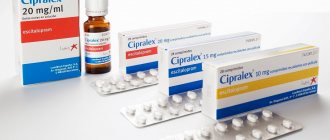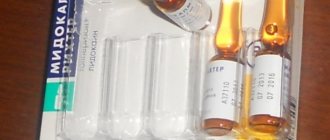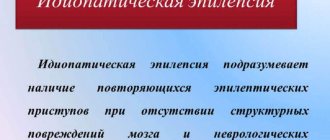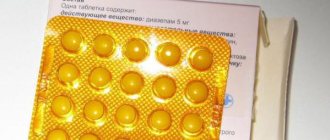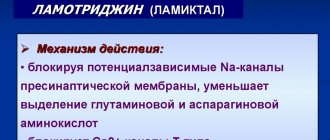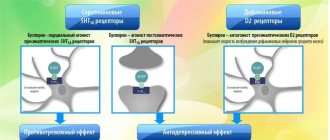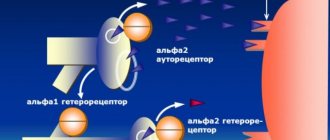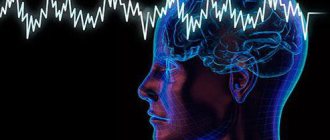Prohibited during pregnancy
Prohibited during breastfeeding
Allowed for children
Has restrictions for older people
Prohibited for liver problems
Prohibited for kidney problems
Phenobarbital is a drug that has long been the main medication used to treat epilepsy. But due to the pronounced hypnotic effect and a large number of side effects, modern medicine no longer classifies this drug as a first-line drug.
Despite this, Phenobarbital is a vital medication for people with status epilepticus and, according to the instructions for use, is widely used to relieve seizures of various etiologies. Currently, the active substance phenobarbital is the basis of many medications, including the popular Corvalol, but is often supplemented with other components to minimize the negative effects on the body.
Release form
Manufacturers offer a variety of formulations of Phenobarbital. Recently, the circulation of the drug has been limited, but it is possible to replace one medicinal type of composition with another only with the permission of the doctor and according to the scheme developed by him.
In pharmacies you can find:
- tablets - round, white, flat elements of 50 or 100 mg of active substance for adults. For children, Phenobarbital is available in 5 mg tablets with a high sucrose content;
- solution – transparent, colorless composition of 0.2% concentration in ampoules of 1 ml;
- powder is a pure substance that is used only in a hospital setting.
Working with each of the listed dosage forms is accompanied by its own specifics. The rules for using the products must be established by the attending physician, taking into account the conditions given in the instructions from the manufacturer.
Analogs
All analogs of Phenobarbital, in addition to Pagluferal, are developed on the basis of other active substances that have antiepileptic effects, since this substance is prohibited for use in many countries of the world.
Pagluferal is a combination drug in the form of scored tablets, which, in addition to phenobarbital, contains bromizoval, caffeine benzoate, papaverine and calcium gluconate. Used for epilepsy. The average price for the drug ranges from 85 to 200 rubles per package, depending on the concentration of active substances.
- Topirol is an antiepileptic drug consisting of topiramate (active ingredient), lactose, cellulose, talc, starch, propylene glycol, titanium dioxide and iron dioxide. It is used for convulsive seizures of various origins, including epilepsy. Available in the form of brown film-coated tablets containing 25, 50 or 100 mg of topiramate. The approximate price is 340 rubles for a package of 30 tablets.
- Zeptol is a carboxamide derivative. Release form: tablets containing 200 and 400 mg of carbamesipine. Prescribed for status epilepticus and generalized convulsive seizures. A package of Zeptol of 30 tablets of 0.2 g costs 85 rubles, and a package with a concentration of 0.4 g costs 104 rubles.
In addition to complete analogues, there is a fairly extensive list of medications that contain phenobarbital in combination with other substances and at the same time have a completely different scope of application. Let's take a closer look at which medications also contain phenobarbital:
- Corvalol.
- Valocordin.
- Pentalgin-N.
- Lavocordin.
- Andipal.
The listed medications contain a small dose of phenobarbital and are widely used as sleeping pills or sedatives.
pharmachologic effect
Phenobarbital is part of the pharmacological group of antiepileptic, sedative and hypnotic drugs. It belongs to the long-acting barbiturates.
The chemical and biological properties of the product make it possible not to officially classify it as a drug, unlike some intermediate or short-acting barbiturates. The synthetic composition is actively used to combat sleep disorders, manifestations of intoxication of the body, and seizures of various etiologies.
Is it possible to quit phenobarbital on your own? Addiction treatment
Self-cancellation, completely eliminating the use of any medications, can lead to the development of seizures, nausea, vomiting, and rapid weight loss. Since many barbiturate addicts take several medications at once or mix the pills with vodka, only an experienced narcologist can work with such addiction.
When cleansing the drug addict's body of barbiturates, active diuresis is prescribed with simultaneous intravenous injections of sodium bicarbonate. Proteins and polymers of drugs not only promote the absorption of barbituric acid salts, but also stimulate diuresis.
In addition, hemodialysis is used, which is designed to ensure normal hemodynamics, normalization of blood pressure, oxygenation and ventilation of the lungs. Increased diuresis leads to blood thickening and the risk of thrombosis. To thin the blood, not only plasma preparations are used, but also sodium bicarbonate, injections are performed:
- nicotinic acid,
- ascorbic acid,
- riboflavin.
To maintain the cardiovascular system in tone and prevent a drop in blood pressure, norepinephrine and adrenaline are used.
Overdoses and barbiturate poisoning lead to increased manifestations of cholinergic syndrome. To counteract its increase, it is necessary to begin administering piracetam drugs as quickly as possible.
Pharmacodynamics and pharmacokinetics
The mechanism of action of the drug can be traced at the cellular level. The component stimulates the receptors of the nervous system, changing the principles of metabolic processes and chemical reactions. The result is a decrease in the excitability of cell membranes, inhibition of nervous activity, and inhibition of impulse transmission between neurons.
The body's reaction to the use of the drug "Phenobarbital":
- relieving convulsive syndrome by blocking the appearance and propagation of nerve impulses;
- a decrease in the volume of free bilirubin in the blood against the background of changes in enzyme activity. This feature of the product allows you to stimulate the “cleaning” properties of the liver and improve the quality of its work during intoxication;
- weak analgesic effect, but an increased reaction to the stimulus is not excluded;
- reduction of nervous tension, feeling of calm, sleep. Achieved by suppressing sensory activity of areas of the cerebral cortex. Such sleep differs from physiological sleep in the shortening of some phases of the process. It occurs within 30-60 minutes, lasting on average 6-8 hours. When taken regularly, the therapeutic benefit of the product decreases after 10-14 days;
- sedative effect when using small doses of the drug;
- dulling the severity of signs of neurovegetative disorders when using the composition in combination with antispasmodics and/or vasodilators;
- an overdose of the active component provokes depression of the respiratory center in the brain, dulls its sensitivity to carbon dioxide, and reduces tidal volume;
- lowering blood pressure when using large doses;
- relieving increased tone of the smooth muscles of the digestive organs;
- slowing down the rate of metabolic processes;
- slight drop in body temperature.
After oral administration, the main component is absorbed in the small intestine, its maximum concentration in the blood is observed after 1-2 hours. The product is evenly distributed throughout the body; in the brain tissue its volume is minimal.
Bioavailability is 80%, binding to blood proteins in an adult reaches 50%, in a newborn – up to 40%. The product penetrates well through the placenta and breast milk.
Elimination of the product takes several days, which creates a risk of accumulation of the substance or its metabolites in tissues. The half-life averages from 2 to 4 days for adults, up to 7 days for newborns. If kidney function is impaired, the substance stays in the body longer, which must be taken into account when selecting doses and drawing up a therapy schedule. The medicine is processed by liver tissue with the formation of inactive breakdown products. Up to 50% of the composition is excreted from the body unchanged, the rest is excreted in the urine.
Indications for use
The multidisciplinary effect of the drug on the body allows it to be used for a wide variety of pathologies. Increased chemical activity, which occurs in combination with other drugs, increases the effectiveness of a number of integrated approaches. The instructions for use of Phenobarbital or Luminal provide basic information on the product. The final decision on the appropriateness of the approach is made by the doctor.
Indications for use of the drug:
- epileptic seizures of various types, frequency, severity. The exception is absence seizures;
- seizures not associated with epilepsy;
- spastic type muscle paralysis;
- pathological agitation, especially accompanied by anxiety and/or fear;
- hemolytic disease of newborns;
- chorea;
- disturbance of sleep patterns and/or quality;
- the need for premedication;
- increased concentration of bilirubin in the blood in chronic cholestasis, pathological or physiological conditions of newborns;
- infectious diseases (measles, smallpox, whooping cough and others) - as part of complex therapy.
In narcology, through the use of Phenobarbital, patients are helped to cope with the manifestations of withdrawal syndrome due to alcohol dependence. The combination of alcoholic beverages with medication is associated with serious risks, so such therapy is carried out strictly under the supervision of medical professionals.
Phenobarbital analogues, price in pharmacies
If necessary, you can replace Phenobarbital with an analogue for therapeutic effect - these are the following drugs:
- Benzonal,
- Dormiral,
- Barbinal,
- Luminal,
- Hexamidine,
- Primidon.
When choosing analogs, it is important to understand that the instructions for use of Phenobarbital, price and reviews do not apply to drugs with similar effects. It is important to consult a doctor and not change the drug yourself.
Price in Russian pharmacies: you can buy Phenobarbital 100 mg 10 tablets from 21 to 23 rubles.
Dispensed strictly according to a doctor's prescription. It should be noted that the import of the drug into many countries is strictly prohibited.
Contraindications
The manufacturer cites a lot of conditions in which it is better to refrain from using the product. If the patient has relative inhibitions, therapy is recommended to be carried out under the supervision of a physician. If possible, with any restrictions, the drug is replaced with an analogue from the corresponding therapeutic group.
List of absolute contraindications to the use of the medicine:
- violent reaction of the body to the main component, increased sensitivity to any barbiturates;
- severe decreased performance of the kidneys and/or liver;
- metabolic problems, for example, diabetes, damage to the thyroid gland, adrenal glands;
- first trimester of pregnancy – there is a high risk of impaired embryo development;
- breast-feeding;
- myasthenia gravis of any severity;
- porphyria in medical history;
- chronic alcoholism, drug addiction in the active phase or history;
- severe anemia;
- respiratory diseases, which are accompanied by shortness of breath and bronchial obstruction.
Separately, there are a number of conditions in which treatment requires special care. Persons with depression, a history of suicide attempts, bronchial asthma, and hyperkinesis need increased attention from doctors. A decrease in kidney and/or liver function should be accompanied by dosage adjustments. Pregnant women (II and III trimesters) and children of any age are usually treated under the supervision of medical personnel. The medication is not recommended for patients with persistent or acute pain.
Side effects
The use of Phenobarbital is often accompanied by drowsiness, decreased activity and attention. If the phenomena do not cause significant discomfort, they are considered a variant of the norm.
Otherwise, treatment should be stopped and the patient should be given a less aggressive drug. Almost all side effects that may occur during treatment become an indication to stop taking the drug. The final decision in each specific case is made by the attending physician, based on the severity of symptoms and the presence of signs of positive dynamics.
Possible side effects of therapy:
- neurological - severe drowsiness, up to pathologically prolonged sleep. Dizziness, coordination problems, headache, lethargy, depression. Sometimes, instead of a hypnotic effect, insomnia occurs, and the patient is tormented by nightmares. In elderly and weakened patients, a paradoxical reaction in the form of an extreme degree of agitation cannot be ruled out. With long-term use of the drug, hallucinations, tremors of the limbs, and decreased intelligence are possible;
- dyspeptic – nausea or vomiting, stool retention. Long-term use may result in deterioration of liver function;
- rheological – decrease in the number of platelets, leukocytes and/or red blood cells in the blood;
- cardiovascular - slow heart rate, slow decrease or sharp drop in blood pressure;
- immune - an allergic response in the form of hives, breathing problems, swelling of certain parts of the face. In rare cases, malignant exudative erythema develops, and the patient may die;
- from the senses - involuntary vibrations of the eyeballs;
- from the musculoskeletal system - changes in the chemical and structural composition of bones, rickets.
With prolonged use of the medication, its active substance begins to accumulate in the tissues, and drug dependence develops. If you then exit therapy incorrectly, the patient will develop withdrawal syndrome.
During the first 12 hours, anxiety, muscle twitching, hand tremors, and dizziness appear. Weakness, nausea and vomiting may occur, problems with sleep appear, and the patient is tormented by nightmares. Next, the main symptoms arise in the form of hallucinations and seizures. There are often signs of mental drug dependence, which are accompanied by a decrease in libido. To prevent such negative consequences, drug withdrawal is carried out gradually, the regimen is selected by the attending physician.
Instructions for use of Phenobarbital: method and dosage
The product annotation provides detailed information on the principles of therapy. Despite this, drug dosages should be selected by a doctor. They depend on the patient’s age, his physical condition, physiological characteristics, diagnosis, and expected results. Typically, the starting daily dose is the therapeutic minimum suitable for a particular case. It is increased only if there are no signs of positive dynamics.
Basic principles of using the medicine:
- for epilepsy - adults are given 50 mg twice a day. The dose is gradually increased until a volume that relieves seizures is established. The same schedule is provided for children, but doses are selected according to age. One-time volume for a baby less than 6 months. – 5 mg, up to one year – 10 mg, up to 2 years – 20 mg, up to 4 years – 30 mg, up to 6 years – 40 mg, up to 9 years – 50 mg, up to 14 years – 75 mg;
- The composition is taken orally 30-40 minutes before meals;
- Abrupt withdrawal from the drug for epilepsy threatens not only withdrawal syndrome, but also the development of status epilepticus and an increase in seizures;
- the maximum single dose of the drug for an adult is 200 mg, daily – 500 mg;
- for children under 3 years of age, the tablets are crushed into powder, which is diluted with a small amount of water to form a suspension;
- for problems with sleep, the drug is given to adults at a single dose of 100-200 mg 30-60 minutes before going to bed. The pediatric dose is selected according to age, starting from 5 mg;
- if there is an increased level of bilirubin in the blood, children under 12 years of age are given medicine at a rate of 3 to 8 mg per 1 kg of body weight per day for 3-5 days. Children over 12 years of age are prescribed 90-180 mg of the active ingredient. The therapeutic volume is divided into 2-3 approaches;
- as a premedication, the composition is given to patients older than 6 months, 1-3 mg per 1 kg of weight 60-90 minutes before manipulation.
For young children, the drug is often given in the form of a 0.2% solution for oral administration. In this case, you can ignore the meal schedule. In this case, standard dosages are used, unless otherwise provided by the treatment regimen.
Phenobarbital overdose
Addiction and withdrawal symptoms are not the only dangers of barbiturate. When taking it, there is a possibility of developing chronic toxic poisoning or acute overdose. If 1 g of the active substance enters the body, serious negative consequences are possible. For an adult, 2 g of the drug is a potentially lethal dose.
The acute condition is characterized by ataxia, confusion, headache, severe weakness and drowsiness or extreme agitation. The patient experiences oliguria, decreased blood pressure, a drop in body temperature, slow pulse, and cyanosis. In the absence of timely medical care, the pupils narrow, reflexes weaken or disappear, the pulse weakens, and bruises appear at pressure points on the skin. Severe poisoning leads to apnea, collapse, coma, and death due to cardiac or respiratory arrest.
Intoxication due to a barbiturate overdose can take on the appearance of clinical death, which is explained by the suppression of the electrical activity of the brain. In this case, it is important to make a correct diagnosis. If not much time has passed since the development of the emergency condition, and hypoxia has not led to irreversible changes in the brain matter, then the phenomenon is completely reversible.
Chronic Phenobarbital poisoning is characterized by bad mood, apathy, irritability, sleep problems, and decreased intelligence. Victims often complain of dizziness, problems with coordination, poor balance, general weakness, confusion of speech, and drowsiness. In advanced cases, convulsions, hallucinations, and malfunctions of the digestive tract, heart, blood vessels, and kidneys occur.
There is no special antidote that neutralizes the effect of the drug. As first aid in case of acute overdose, it is necessary to remove Phenobarbital from the body as quickly as possible. Additionally, symptomatic therapy is provided according to indications. After performing manipulations aimed at stabilizing the vital functions of the body, the victim is transported to the hospital.
Principles of treating a patient with an overdose of Phenobarbital:
- preventing further absorption of the active substance by inducing vomiting and gastric lavage;
- taking activated carbon, laxative saline and alkaline solutions, performing forced diuresis;
- normalization of blood pressure, prevention of airway blockage, oxygen supply if necessary;
- carrying out anti-shock measures in severe condition of the patient;
- preventing oversaturation of the body with sodium or fluid;
- hemodialysis for life-threatening intoxication.
After the patient is brought out of critical condition, the activities are not completed. An overdose of barbiturate can cause congestive heart failure, pneumonia, kidney problems, and heart rhythm disturbances. Chronic drug poisoning is treated by gradually eliminating the product. If necessary, symptomatic therapy is carried out.
Overdose
With a single dose of one gram of the drug Phenobarbital, the following symptoms are observed: lethargy, nystagmus, dizziness, headache, decrease or increase in body temperature, blurred speech, irritability, loss or weakening of reflexes, sleep disturbances, difficulty and slowing of breathing, coma, ataxia, decreased blood pressure , brady- or tachycardia, pneumonia, confusion, pulmonary edema, oliguria, constriction of the pupils. In these cases, symptomatic therapy is necessary.
When taking from 2 to 10 g of the drug Phenobarbital, it is fatal.
Interaction
The increased chemical activity of the product requires caution when including it in complex therapy. Any drug combinations in this case should be monitored by the attending physician.
The description of the drug indicates a number of features:
- caffeine inhibits the hypnotic properties of the product;
- MAO inhibitors and Methylphenidate increase the toxicity of the main substance and its inhibitory effect on the nervous system by increasing the concentration in the blood plasma;
- an extensive list of drugs begins to act more intensely or weakly under the influence of phenobarbital (some contraceptives, xanthines, antidepressants, anticoagulants);
- in combination with acetazolamide, the composition provokes the development of rickets and osteomalacia;
- valproic acid stimulates the sedative effect of the product, up to lethargy;
- the effect of some calcium channel blockers is inhibited due to a decrease in their concentration in the blood plasma;
- phenobarbital reduces the effectiveness of paracetamol, while creating a toxic effect on the liver;
- active substances in psychotropic drugs and sedatives under the influence of the drug can provoke respiratory depression.
These are just the basic points, which are highlighted separately due to the high frequency of use of products in such combinations. The use of barbiturates should be treated with caution against the background of antibacterial therapy, the use of antifungals, analeptics and many other compounds.
Drug interactions
Phenytoin and valproate increase the content of phenobarbital in the blood serum.
The anticonvulsant effect of phenobarbital is reduced when taken simultaneously with reserpine, and increases when combined with amitriptyline, nialamide, diazepam, chlordiazepoxide.
Reduces the effectiveness of oral contraceptives and salicylates.
Reduces the blood levels of indirect anticoagulants, corticosteroids, griseofulvin, doxycycline, estrogens and other drugs metabolized in the liver via oxidation (accelerates their destruction).
Strengthens the effect of alcohol, neuroleptics, narcotic analgesics, muscle relaxants, sedatives and hypnotics.
Acetazolamide, by alkalinizing the urine, reduces the reabsorption of phenobarbital in the kidneys and weakens its effect.
The hypnotic effect of phenobarbital is reduced when taken simultaneously with atropine, belladonna extract, dextrose, thiamine, nicotinic acid, analeptics and psychostimulants.
Reduces the antibacterial activity of antibiotics and sulfonamides, the antifungal effect of griseofulvin.
special instructions
Phenobarbital affects the central nervous system and affects the activity of liver enzymes. It is perceived differently by people and has a particular impact on the elderly and children. There are several points that must be taken into account to obtain the maximum effect from therapy with minimal risks.
Specific recommendations for taking the medication:
- for liver problems, the drug is prescribed in reduced doses;
- for the treatment of insomnia, the drug is used less and less, replacing it with less aggressive analogues;
- the occurrence of a skin reaction is an indication for discontinuation of the product;
- a history of urticaria, angioedema or bronchial asthma significantly increases the likelihood of developing intolerance to the main component;
- A course of Phenobarbital should be accompanied by regular assessment of the functioning of the liver, kidneys, and blood composition;
- clinical manifestations of depression may increase under the influence of medication;
- children often react to taking barbiturates with signs of irritability, hyperactivity, and unhealthy agitation;
- Pregnant women can take the drug only if there are strict indications and it is impossible to choose a less dangerous analogue. Even if all precautions are followed, such manipulations can lead to abnormalities in the child’s development. Barbiturates used in later stages can provoke drug dependence in newborns;
- Taking the drug during pregnancy in the later stages or during childbirth can only be carried out if resuscitation equipment is within walking distance.
Even a single dose of Phenobarbital leads to a decrease in concentration and the development of drowsiness. During the period of treatment, it is better to refrain from driving vehicles or working in hazardous industries.
The drug phenobarbital - what is it?
Phenobarbital is not sold in its pure form; it is used from sedatives that contain it. The product causes severe intoxication, and in particularly large doses – a complete loss of criticism and control. Addicts experience hallucinations and behavioral disorders.
Phenobarbital made its presence known as a drug already in the 2000s. For example, the substance was found in the blood of drivers involved in strange accidents, and in people admitted to hospitals with poisoning.
Paradoxically, no measures have yet been taken to restrict the sale of Valocordin and Corvalol, which contain this substance.
What is phenobarbital created for?
Phenobarbital was developed by narcology to combat epilepsy attacks. The product was synthesized in 1912, following barbital. Initially, the drug was used to provide a powerful sedative effect. In principle, the substance is used for these purposes to this day.
When does addiction start?
The diagnosis of phenobarbital dependence is established when there are harmful consequences from the use of this substance. These include committing offenses and crimes in an uncontrolled state and the inability to concentrate. Increased load on the liver and kidneys leads to their diseases. The nervous system is instantly depleted: a person loses sleep and appetite, and cannot lead a normal lifestyle.
How to determine addiction in a drug addict?
If a loved one takes phenobarbital-based drugs in large quantities, this is a reason to sound the alarm. In Russia, the same Valocordin and Corvalol can be bought without a doctor's prescription. But doctors advise taking 5-10 drops per large amount of liquid, and drug addicts drink a whole tube in one gulp or eat several blisters of tablets.
The main signs of dependence on phenobarbital:
- Uncontrolled use of drugs with substance retention. We are talking about multiple excesses of the norm, which is easy to notice with the naked eye.
- Slow reaction, lethargy, inadequacy. The person takes a long time to answer simple questions, draws obviously incorrect conclusions, as if he is delirious on the fly.
- Inability to sleep or relax without phenobarbital. At the same time, inducing long-term sleep is unrealistic - the nervous system refuses to work normally without “doping”.
- No pain under anesthesia. After taking sedatives, a person may not notice that he has become very ill, cut himself, etc.
- Pronounced changes in appearance. The skin becomes bluer or paler, the eyes become sunken, and unhealthy thinness develops.
Reviews about Phenobarbital
Positive reviews of the product are associated with its ability to enhance the filtering properties of the liver. Its effect on the body in this case rarely causes negative consequences and reduces the risk of developing health and life-threatening conditions. Many positive characteristics of the drug are given by people who took it as a sedative. If you follow the rules of therapy and the doctor’s recommendations, in 90% of cases the result is good.
The main reason for negative reviews is the variety and fairly frequent development of side effects. Many people cannot evaluate the quality of the product at all due to the abundance of contraindications and restrictions. Even in cases where the body’s negative response in the form of drowsiness or decreased concentration is recognized as physiological, patients have to change their usual routine. In recent years, doctors have been trying to prescribe barbiturates as rarely as possible, replacing them with effective but less dangerous analogues.
Drug addiction: services and prices
▸ Call a narcologist
- Service
- Price
- Initial consultation by phone
- FOR FREE
- Consultation with a narcologist at home
- from 3000 rub.
- Departure of the intervention team (persuasion to undergo treatment)
- from 5000 rub.
- Relieving drug withdrawal
- from 4000 rub.
- Hospital at home (days)
- from 6000 rub.
- Single dropper
- from 3000 rub.
- Double dropper
- from 5000 rub.
- Standard detoxification
- from 4000 rub.
▸ Drug addiction treatment
- Service
- Price
- Initial consultation by phone
- FOR FREE
- Consultation with a narcologist
- from 1500 rub.
- Calling a narcologist to your home
- from 2500 rub.
- Drug test
- from 1000 rub.
- Motivation by intervention method
- from 5000 rub.
- Accompaniment to the clinic/rehabilitation
- from 10,000 rub.
- Relieving drug withdrawal
- from 6000 rub.
- Detoxification of the body from drugs
- from 7000 rub.
- Diagnosis of general health
- from 5000 rub.
- Consultation with a psychologist
- from 2000 rub.
- Psychotherapy
- from 2500 rub.
- Drug filing
- from 10,000 rub.
- Inpatient rehabilitation
- from 40,000 rub.
- Outpatient rehabilitation
- from 25,000 rub.
- Adaptation of a drug addict after treatment
- from 20,000 rub.
▸ UBOD
- Service
- Price
- Initial consultation by phone
- FOR FREE
- Visit of a narcologist and consultation at home
- from 3000 rub.
- Accompaniment to the clinic hospital
- from 10,000 rub.
- Ultra-fast opioid detoxification
- from 20,000 rub.
- Diagnosis of health conditions
- from 8000 rub.
- Observation by a narcologist in a hospital (24 hours)
- from 6000 rub.
- Session with a psychologist
- from 1500 rub.
- Psychotherapy
- from 2500 rub.
- Compulsory treatment (intervention method)
- from 10,000 rub.
- Unique rehabilitation program
- from 40,000 rub.
- Rehabilitation of drug addicts abroad
- from 50,000 rub.
▸ Removing withdrawal
- Service
- Price
- Initial consultation by phone
- FOR FREE
- Visit and consultation of a narcologist at home
- from 3000 rub.
- Relieving drug withdrawal at home
- from 8000 rub.
- Relieving drug withdrawal in a hospital
- from 6000 rub.
- Ultra-fast opioid detoxification
- from 20,000 rub.
- Combined body detoxification
- from 10,000 rub.
- Observation by a narcologist in a hospital (24 hours)
- from 6000 rub.
- Appointment with a psychologist
- from 1500 rub.
- Psychotherapy for addicts
- from 2000 rub.
- Accompaniment to the clinic hospital
- from 10,000 rub.
- Unique rehabilitation program
- from 40,000 rub.
▸ Medical tests
- Service
- Price
- General urine analysis
- from 400 rub.
- Complete blood count, biochemical blood test
- from 1500 rub.
- Electrocardiography (ECG)
- from 500 rub.
- Blood for HIV
- from 500 rub.
- Blood for syphilis
- from 500 rub.
- Blood for hepatitis B (antibodies)
- from 500 rub.
- Blood for hepatitis C (antibodies)
- from 500 rub.
- Test for the presence of drugs in urine
- from 3000 rub.
- Genotyping analysis (hereditary risk of addiction)
- from 10,000 rub.
- Express genotyping analysis (hereditary risk of addiction)
- from 15,000 rub.
Similar articles
Chemical dependence - how to deal with it
For some people, drugs and alcohol help them take their mind off their problems, but they don't notice that chemical dependency is crowding out important things from their minds, making their problems even worse. According to ok… Read more →
Teenage drug addiction - what should parents do?
Just a few years ago, drug addicts among schoolchildren were the exception, but today teenage drug addiction is a common occurrence that does not surprise others. Narcologists register among their patients... Read more →

